Plantations were big farms and the owners of the plantations commonly used slaves as the labor force to cultivate crops. Nowadays, the majority of plantations do not function, however, remain an attractive landmark for tourists who want to experience the history of plantations and feel the spirit of the age. The major purpose of the paper is to examine five plantations of South Carolina, namely Boone Hall, Drayton Hall, Hampton Plantation, Borough House, and Fort Hill Plantation.
One of the oldest plantations that is still functioning is considered to be Boone Hall plantation of South California (Strohm 43). Crops have been produced on this plantation for over three hundred years. Originally, Boone Hall was known for the production of pecans and cotton, however, nowadays they have already expanded the market and adjusted to current trends and a wide range of fruits and vegetables can be purchased there, namely the following ones, pumpkin, strawberries, blueberries, and other (“Boon Hall Plantation” par. 3). Boone Hall market is located very close to the fields and is open every day for the visitors. Close location to the plantation contributes to a fresh and fast delivery of the product. The visitors can also try a homemade food and local seafood in the café close to the market. The guests will admire the wine alley and the department where they can buy different jams and sauces made of fruits and vegetables grown on the plantation.
Boone Hall became a place that is open to the public in 1956 (“Boon Hall Plantation” par. 1). McRae family, the owners of the plantation, bought it one year prior to the open visiting. They furnished the house and decided to give tours. The family contributes to the development and improvement of the plantation for the visitors to enjoy their time and to experience life on the plantation. Experienced staff will provide the visitors with all the information related to daily life of Boone Hall and a history of the plantation. It was founded in 1681 by John Boone (Fox and McLaughlin 62). The owners of the plantation are proud to be responsible for such a place with a long history. It is located “at Long Point Road in Mt. Pleasant, SC, 8 miles from downtown Charleston” (“Boon Hall Plantation” par. 4).
As a matter of fact, the original two-story house that was constructed at the end of the eighteenth century was made of wood. However, the house that can be seen nowadays was re-built by Thomas Stone that purchased the plantation at the beginning of the twentieth century. The owner wanted to create a grander house that would reflect the colonial-revival style. On the territory of plantation nine cabins for slaves can also be found that were used during slavery times.
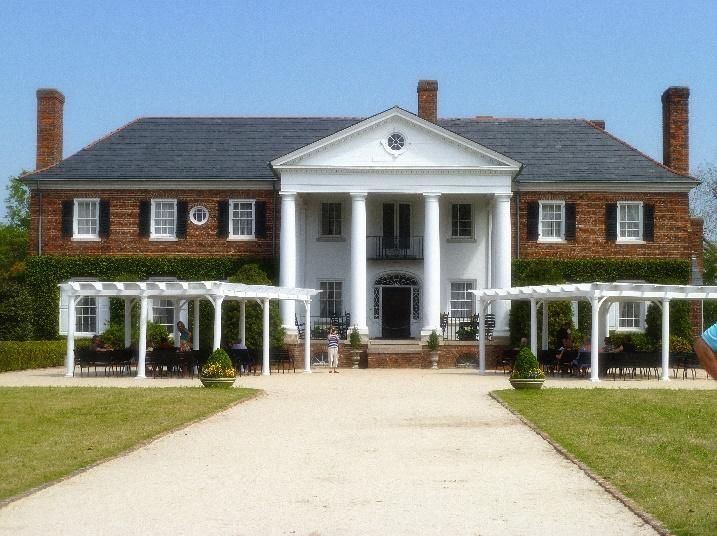
Today’s owners, McRae family, want the plantation to reflect the history, and thus, work a lot to make it as it used to be.
Another plantation that is also well-known in South California is Drayton Hall. According to recent scientific reports, the first people who lived on the territory of the plantation were Native Americans. The plantation is located close to Charleston and was established in the eighteenth century (“Drayton Hall” par. 1). The house is a perfect example of the Palladian architectural style. The mansion was originally constructed for John Drayton, who was the owner of the plantation in the middle of the eighteenth century. The period of construction lasted for four years (“Drayton Hall” par. 3). The mansion was erected with the help of the slaves and free men as well. The family of Drayton was famous in the political and economic world. The major objective of every owner of the plantation was to save the history of the plantation and mansion.
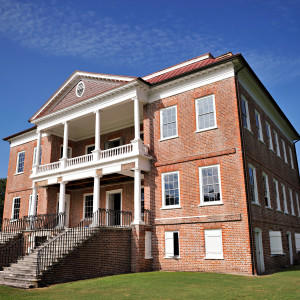
Thus, the house has never been changed. The major intention of the owners is to leave the plantation untouched for the visitors to have an opportunity to feel the spirit of history. As a matter of fact, Drayton Hall was the only plantation mansion that was not destroyed during the Civil War. The Civil War had an impressive impact on the way of life people had in the Drayton Hall. When the war broke out, there were thirty slaves who worked on the plantation, however, after the end of war, only a few people remained. The house is considered to be the masterpiece of the Georgian-Palladian style. Rice, wheat, and corn were commonly grown on this plantation. Nowadays, it is an attractive place for visitors who want to experience old times and to see the architectural masterpiece.
Hampton Plantation is another well-known place and landmark of South California. It is worth stating that this historic site was founded in 1735 (“Plantations in South Carolina” par. 2). The mansion that is situated in Hampton Plantation is considered to be one of the most beautiful buildings in the United States. Nowadays, Hampton Plantation consists of almost 300 acres. The territory of the plantation is not used for agricultural needs anymore. The mansion is a big two-story wooden house.
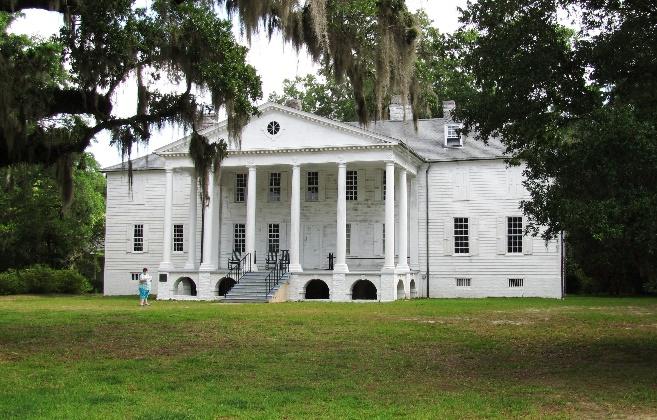
The construction of the mansion took over twenty years. In 1757, the plantation was purchased by Daniel Horry, who decided to reconstruct the building and make the mansion bigger (Millar 152). The owner wanted the house to be symmetrical.
All the owners of the plantation were famous and influential figures in economics and politics of South Carolina. It is worth pointing out that the territory became the property of the state in the middle of the twentieth century.
Nowadays people can buy a ticket to get a tour not only around the mansion but plantation as well. The building reflects the power of the owners and amazes with architectural decisions. Slaves worked for the owners of the plantation during the construction of mansion and rice cultivation. Rice crop made the plantation profitable and contributed to the creation of the architectural masterpiece.
Borough House is another plantation that should be discussed. It should be noted that it is located in South Carolina and is famous for the unusual technique, namely the rammed earth, which was used to construct the mansion and six additional buildings at the beginning of the nineteenth century (Mileto 272). The place was a home for Richard Anderson. The mansion was erected in 1758 and was a home for numerous families. The plantation attracts a lot of visitors as it is the most impressive complex that was constructed by the rammed earth. The technique was popular in France and Spain, however, was rarely used on the territory of the United States.
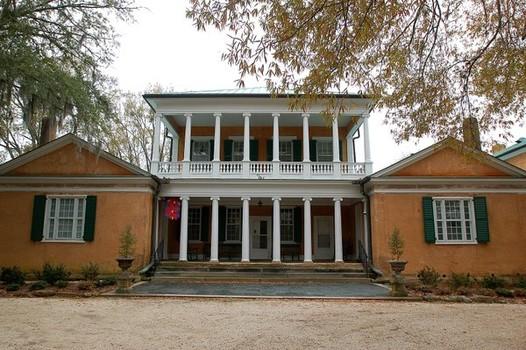
The place was well-known for the production of cotton; however, nowadays the plantation does not function as it used to be. The owners of the plantation used the work of slavery to grow cotton.
The last plantation under consideration is the Fort Hill Plantation. It is located on the territory of Clemson University. According to the scientific data, the plantation was founded in 1784 (“Fort Hill Plantation” par. 3). Robert Tate, the owner of the territory, was provided with the land by the state.
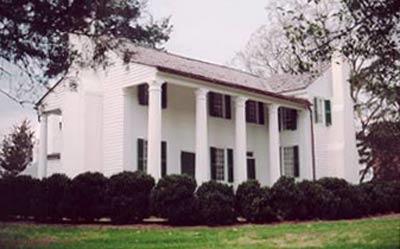
At the beginning of the eighteenth century, the plantation was owned by John Ewing Calhoun. During the period of functioning, there were a lot of owners of the territory. The major crop that was grown on the plantation is considered to be cotton. According to the information provided by scientific reports, the number of slaves who worked on the territory of the plantation was eighty. The plantation does not function nowadays, however, is a perfect place to feel the history as the mansion was restored and now is open to visitors. People have an opportunity to visit the territory of plantation almost every day except Christmas Eve and day.
In conclusion, it should be pointed out that plantations remain interesting for visitors who want to experience the life of people who used to work there. However, some plantations still function and offer delicious food to the visitors. The described above places are essential to be taken into consideration while planning a holiday as it is a great opportunity to visit landmark and get a better understanding of the life on the plantations.
Works Cited
Boon Hall Plantation n.d.
Drayton Hall n.d.
Fox, William, and John McLaughlin. South Carolina, off the Beaten Path: A Guide to Unique Places. Guilford: Globe Pequot, 2013. Print.
Mileto, Loui. Earthen Architecture: Past, Present and Future. New York: Crc, 2015. Print.
Millar, John. The Buildings of Peter Harrison: Cataloguing the Work of the First Global Architect, 1716-1775. Jefferson: McFarland, 2014. Print.
Plantations in South Carolina n.d.
Strohm, Stephanie. Confederates Don’t Wear Couture. Boston: Houghton Mifflin Harcourt, 2013. Print.